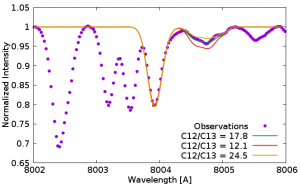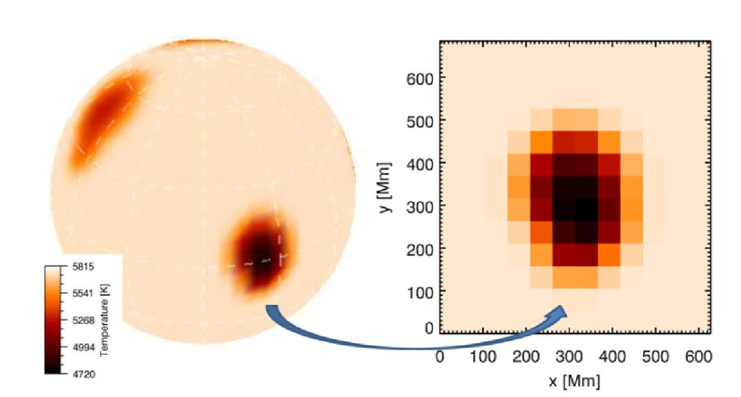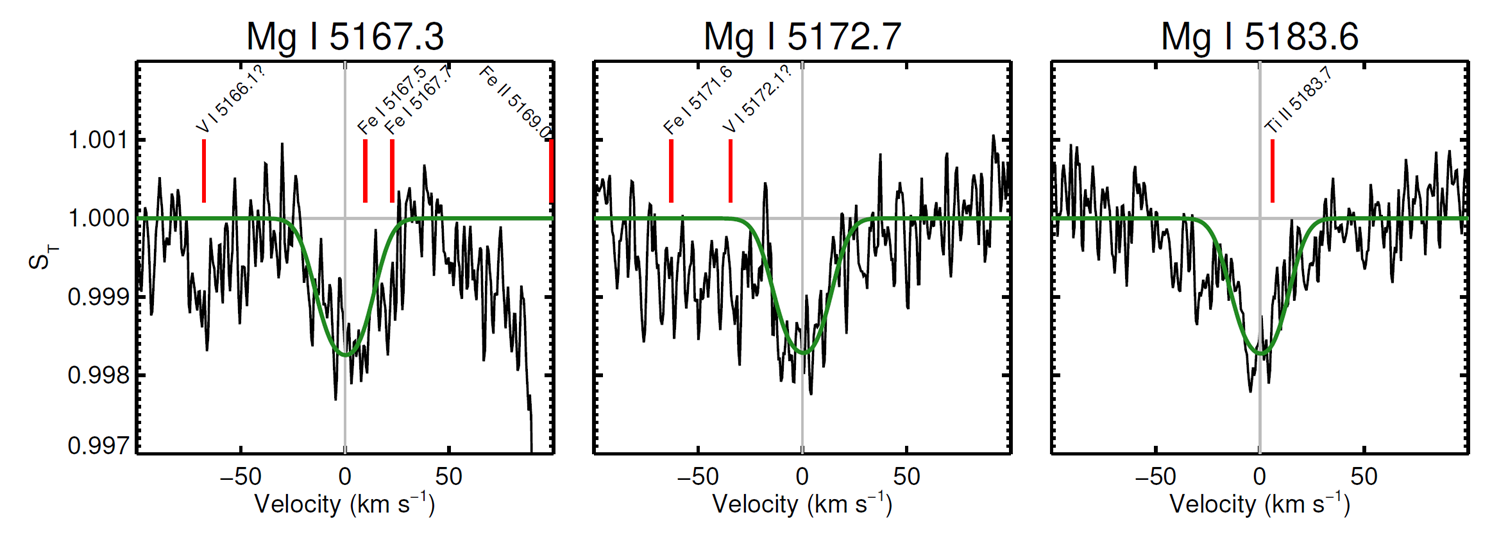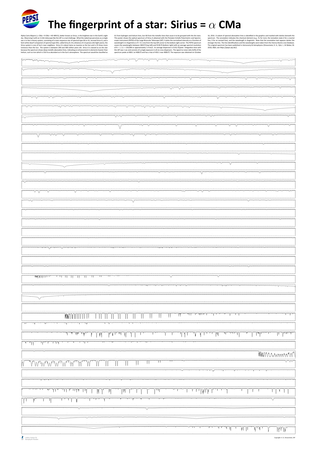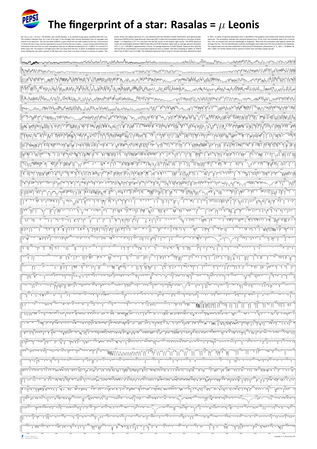Context. With the Large Binocular Telescope (LBT), we obtained a spectrum with PEPSI, its new optical high-resolution échelle spectrograph. The spectrum has very high resolution and a high signal-to-noise (S/N) and is of the K0V host Kepler-444, which is known to host five sub-Earth-sized rocky planets. The spectrum has a resolution of R ≈ 250 000, a continuous wavelength coverage from 4230 Å to 9120 Å, and an S/N between 150-550:1 (blue to red). Aim. We performed a detailed chemical analysis to determine the photospheric abundances of 18 chemical elements. These were used to place constraints on the bulk composition of the five rocky planets.
Methods: Our spectral analysis employs the equivalent-width method for most of our spectral lines, but we used spectral synthesis to fit a small number of lines that required special care. In both cases, we derived our abundances using the MOOG spectral analysis package and Kurucz model atmospheres.
Results: We find no correlation between elemental abundance and condensation temperature among the refractory elements (TC > 950 K). In addition, using our spectroscopic stellar parameters and isochrone fitting, we find an age of 10 ± 1.5 Gyr, which is consistent with the asteroseismic age of 11 ± 1 Gyr. Finally, from the photospheric abundances of Mg, Si, and Fe, we estimate that the typical Fe-core mass fraction for the rocky planets in the Kepler-444 system is approximately 24%.
Conclusions: If our estimate of the Fe-core mass fraction is confirmed by more detailed modeling of the disk chemistry and simulations of planet formation and evolution in the Kepler-444 system, then this would suggest that rocky planets in more metal-poor and α-enhanced systems may tend to be less dense than their counterparts of comparable size in more metal-rich systems.
Read more: Mack, Strassmeier, Ilyin, Schuler, Spada, Barnes, 2018, A&A, 612A, 46



